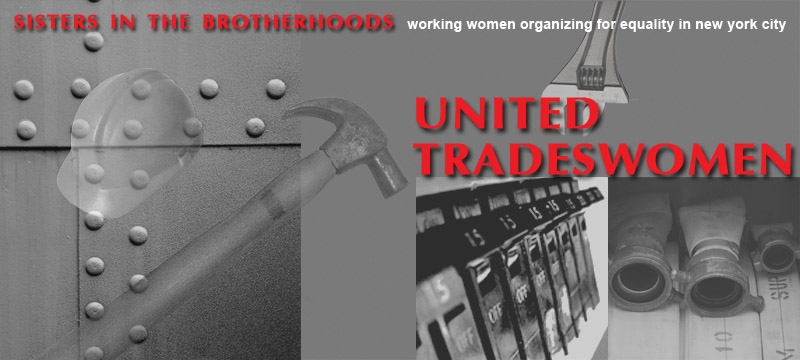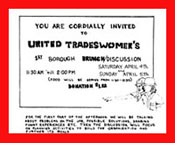 |
||||||
|
||||||
|
In 1979 a group of smart, strong-willed women, fiercely independent but recognizing the need for collective action, forged a new organization in New York City—United Tradeswomen (UT). Its members were white and black, Hispanic and Asian; they also were occupationally diverse.
Initially, UT’s purpose was to lobby the electricians’ and carpenters’ unions to recruit women into their apprenticeship programs. Mary Garvin, a carpenter who was determined to get women into the trades, developed the Women in Apprenticeship Program (WAP) and secured public funding for its operation. WAP recruited women and enrolled them in training programs to give them the skills necessary to find employment in the building trades. When WAP began to set up shop in 1978, the first person Garvin hired was Lois Ross, a new graduate of Rutgers University with a degree in economics. Ross recognized the need for a strong political and organizational support system for women working in nontraditional. Ross, Garvin, carpenter Irene Soloway, and several other women organized UT to meet this need. The group saw its mission (PDF) as providing support and advocacy for women who had begun to enter the construction trades in New York City. Other early members included carpenter and political activist Consuelo Reyes, electrician Evan Ruderman, plumber Kay Webster, electrician Cynthia Long, and ironworker Janine Blackwelder. As a grassroots voluntary organization with democratic ideals, UT depended on the women who poured their creative energies into it. The majority of UT participants were experiencing significant hardships at work and meeting resistance within their unions. The organization provided a network of support and conducted educational forums on such issues as sexual harassment, race discrimination, safety and health, affirmative action, and trade union issues. It also brought pressure to bear on regulatory agencies, employers, contractors, unions and apprentice programs. UT organized successful protest campaigns in 1981 and 1982. UT also monitored union recruitment drives and publicized them among its members. UT actively opposed initiatives designed to weaken affirmative action. Immediately after the Reagan administration took office, the pace of the attack against affirmative action accelerated. The goal of UT and its partners in this common struggle was to preserve the spirit and intent of Title VII—equal employment opportunity. Women and minority organizations had to make their case for jobs, to be included in groups considered for hiring and training, and to maintain the government’s enforcement obligation. Over time this process became increasingly contentious, and it contributed to UT's demise. In a joint oral history interview, Lois Ross, Evan Ruderman, and Irene Soloway discuss UT's origins, activism, and struggles. |
|||||
| ||||||
Copyright 2012 Jane Latour/Talking History |
||||||
